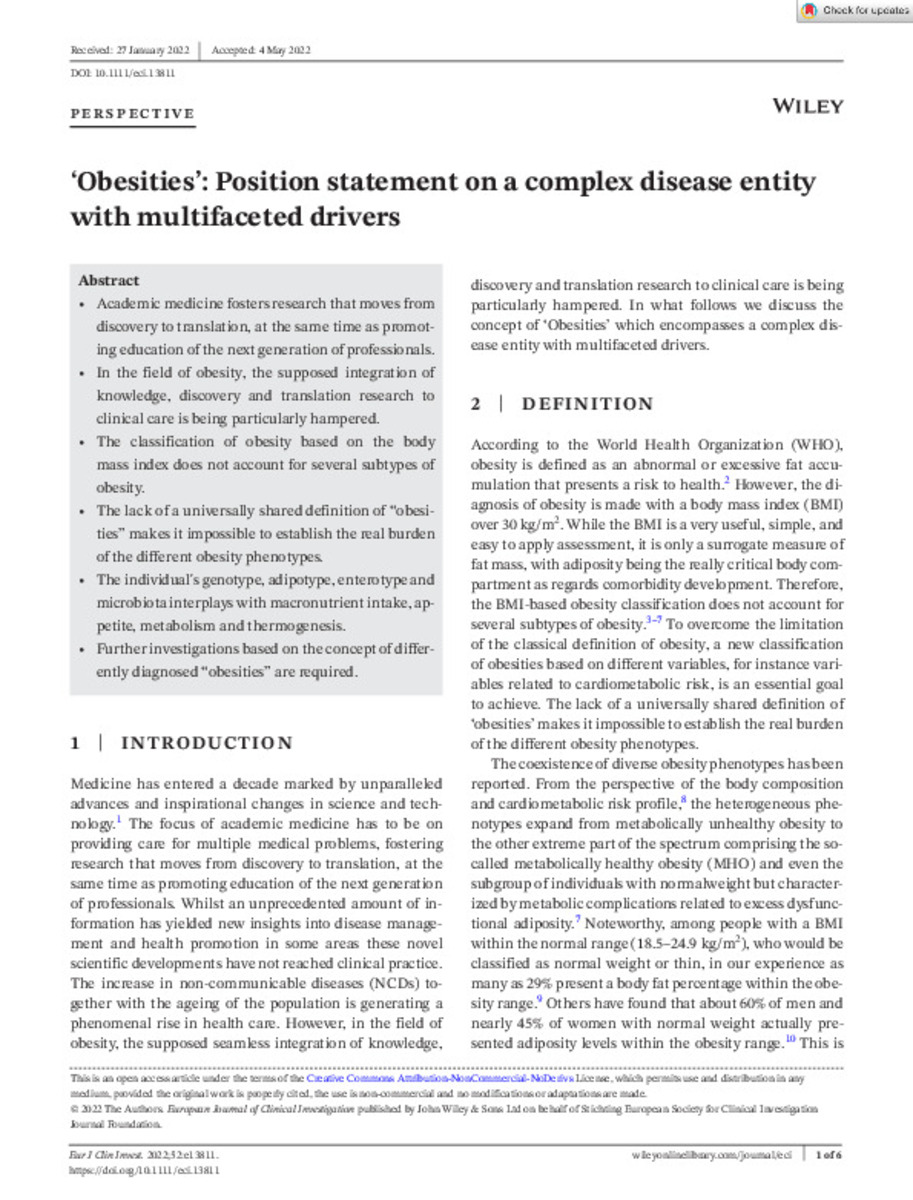‘Obesities’: Position statement on a complex disease entity with multifaceted drivers
Palabras clave :
Dysfunctional adipose tissue
Metabolically healthy obesity
Non-communicable diseases (NCDs)
Obesity phenotypes
Precision medicine
Sarcopenic obesity
Fecha de publicación :
2022
Nota:
This is an open access article under the terms of the Creative Commons Attribution-NonCommercial-NoDerivs License
Cita:
Yárnoz-Esquiroz, P. (Patricia); Olazarán, L. (Laura); Aguas-Ayesa, M. (Maite); et al. "‘Obesities’: Position statement on a complex disease entity with multifaceted drivers". European Journal of Clinical Investigation. 7 (52), 2022, e13811
Aparece en las colecciones:
Estadísticas e impacto
0 citas en

0 citas en

Los ítems de Dadun están protegidos por copyright, con todos los derechos reservados, a menos que se indique lo contrario.







